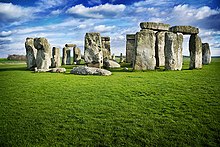
Archaeocryptography (from Greek ἀρχαῖος, arkhaios, "ancient" and κρυπτός (kruptós), "hidden, secret"; and γράφειν (graphein), "to write") is the attempt to decode an ancient monument or structure by supposing an underlying mathematical order beneath the proportions, size, and placement to find any re-occurring or unusual data in respect to that which is being studied,[1] or within another monument or structure.
Archaeocryptography is not a recognized branch of archaeology or of any other academic discipline. It is an example of pseudoscience or pseudoarchaeology that employs contrived calculations involving many free parameters to achieve an impressive-looking result.[2]
- ^ Munck, Carl. "The Spirit of Ma'at". Spirit of Maat. Retrieved 2 November 2012.
- ^ Schmeh, Klaus (2012), "The Pathology of Cryptology—A Current Survey", Cryptologia, 36, London: Taylor and Francis Group: 14–45, doi:10.1080/01611194.2011.632803, S2CID 36073676,
Arguments against archeocryptography are…: There are many numbers involved, which can be arranged in many different formulas and matched against many different values. Munck's claims, therefore, would only be valid with a statistical foundation that proves that his findings are more than merely coincidence. However, Munck has never provided a proof like this.